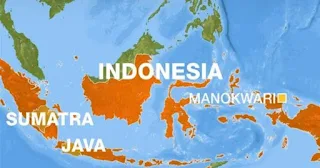Natural Calamities like Tsunami
can’t be ignored: Follow Sendai Framework
There have been severe
disasters in recent years. Due to change in climate – the catastrophic events
are on rise. So the better preparation to tackle with the natural disasters in
needed. In December 2018 Tsunami created
havoc in Indonesia and many people lost their lives.
 |
| Image Source- Al Jazeera |
This
is evident that in future, there will be more natural calamities, and Sendai
Framework is the need of the hour.
About Sendai Framework
Sendai Framework is a framework which has to be adopted after
Hyogo framework for Action for the period of 2005 to 2015 came to an end.
So basically it is an international document which has guidelines and set
of rules to be followed by the nation during 2015 to 2030.
The “Sendai Framework for
Disaster Risk Reduction 2015-2030” was adopted during the Third UN World
Conference on Disaster Risk Reduction held in Sendai, Japan in March, 2015.
It is the first major agreement
of the post-2015 development agenda, with seven targets and four priorities for
action.
These four Priorities actions
are-
- Understanding the disaster risk
- Strengthening the Disaster Risk governance to manage disaster risk
- Investing in Disaster risk reduction
- Enhancing disaster preparedness for effective response, and to build back better recovery
Conference on Disaster Risk Reduction (WCDRR).
The Framework is for 15-year.
It is a voluntary and non-binding agreement which recognizes that the State has
the primary role to reduce disaster risk but that responsibility should be
shared with other stakeholders including local government, the private sector
and other stakeholders.
The implementation of the
Sendai Framework involves adopting integrated and inclusive institutional
measures so as to work towards preventing vulnerability to disaster, increase
preparedness for response and recovery and strengthen resilience.
The
theme of the 2018 International Day for Disaster Reduction was ‘Reducing
Disaster Economic Losses’, which was celebrated in October.
The 2018 theme continued as
part of the “Sendai Seven” campaign, centered on the seven targets of the Sendai Framework.
This year focused on Target C of the Sendai Framework, which was,
‘reducing disaster economic losses in relation to global GDP by 2030’.
In 1989, the UN General Assembly through a resolution had
designated the second Wednesday of October as International Day for Natural
Disaster Reduction.
Later on December 21, 2009, the Assembly adopted a new resolution
on in which it designated 13 October as the date to commemorate the Day and it
also changed the day’s name to International Day for Disaster Reduction.
Conclusion
Sendai framework should be
followed by the States, as they have the primary role to reduce disaster risk. Responsibility should be shared with other
stakeholders including local government, the private sector and other
stakeholders.












